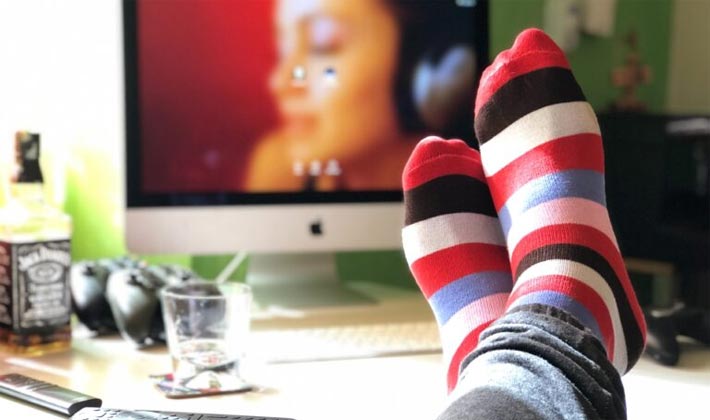Compression socks are typically used for certain medical conditions, but there are other benefits to wearing compression socks!
First, what are compression socks and how do they help? Compression socks are worn to compress the legs and push the blood and fluids back up and away from the legs. They are commonly used to treat varicose veins, which are the visible veins that can protrude out from the skin. In addition to the medical use, they can also be worn for preventative measures and for comfort!
Prevention
Compression socks can be worn to prevent the varicose veins from developing or worsening. They help to push the valves together in the veins, which prevents the pooling of blood. How do you know if you are at risk of developing varicose veins? There are risk factors to consider, which increase the likelihood of developing varicose veins. Some of these are age, weight, genetics, standing or sitting all day, or low activity levels. If you sit at a desk or stand in one position all day, the body’s natural calf pump is not working to push the blood up to the heart, and the blood can pool in the legs. Exercise helps with this because as the calf muscle is working, it is helping to pump blood towards the heart and circulate the blood.
Comfort

Compression socks help to push the fluids away from the leg and prevent pooling. This helps to improve comfort by releasing any pressure felt at the end of the day. Without this pressure, a feeling of improved energy may be present in the legs.
An indication of pooling in the legs is swelling in the feet and ankles, especially at the end of the day. Swelling in the feet and ankles may be noticed through your shoes and socks, and by the way you feel. If your shoes feel tight at the end of the day, or you need to loosen the laces, this is an indication of swelling. Another indication is if you notice lines on your skin where your socks were worn. You may also feel pressure in your legs and ankles by the end of the day. If you feel like putting your feet up at the end of the day to release the pressure, this may be due to swelling. Be aware if you sit or stand in one place for most of the day, as those who are not moving during the day may experience more swelling.
How to Choose a Compression Sock
How do you know what compression socks to choose? There are lots of different options with the choice of different compression grades, height, style and even colours! While the style and colour may be mostly up to personal preference, the compression grade and height can be dependent on your specific needs.
The most common compression grades are the 15-20mmHg for prevention and 20-30mmHg for medical reasons. The 8-12mmHg and 30-40mmHg grades are used for the other extremes. For any medical reasons, and compression levels at 20-30mmHg or above, talk to your doctor to determine the correct compression level.
Compression heights can be up to the knee, thigh or a full pantyhose. To determine which height is best, look where any varicose veins or swelling is present. The sock should cover the affected area to provide the proper support. Knee high socks are a popular choice because the affected area is typically in the lower leg. This is especially true for swelling because gravity will pull the fluids down to the lower leg. For swelling in the ankles, the knee high sock is a great place to start.
To find the right compression socks for you, schedule an appointment with your local Canadian Certified Pedorthist for more information and a pedorthic assessment.
Julia Hayman, C. Ped (C)
